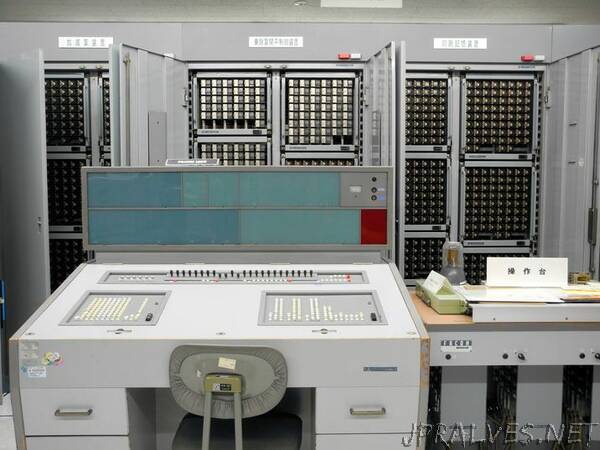
“Long obsolete and not just a museum piece, an early massive computer developed 60 years ago remains working, thanks to a technician dedicated to preserving it for future generations.
Tadao Hamada believes that keeping the historic FACOM128B operational will help hand down Japan’s technological heritage to posterity.“I will maintain it forever,” said Hamada, 49.
Hamada, an employee of Fujitsu Tokki Systems Ltd., a Fujitsu Ltd. subsidiary, works at a plant here to preserve the aged computer, which weighs three tons. It makes rattling sounds each time it makes a calculation by opening and closing switches using an electromagnet.
The FACOM128B model, which was developed by Fujitsu in 1959 as a pioneering Japan-made computer to compete with International Business Machines Corp. in the United States, adopted relay technology used for the core part of telephone switchboards.
Use of vacuum tubes instead of relay technology was common at the time.
The FACOM128B greatly contributed to technological advancements during the period of Japan’s high economic growth from the early 1960s to the early 1970s. The computer was used in the design of camera lenses and the YS-11 plane, Japan’s first passenger aircraft developed after the end of World War II.
Last year, the historic computer was included in the Essential Historical Materials for Science and Technology list by the National Museum of Nature and Science.
Hamada, who has loved working on machines since childhood and graduated from a technical high school in Nagasaki Prefecture, describes the maintenance of the FACOM128B as “my true calling.”
Three years after entering Fujitsu Tokki Systems, he was deployed to the company’s maintenance division to “engage in machine treatment.”
Hamada was selected as the leader of a Fujitsu project that started in 2006 to pass down technology, because he had maintained computing systems for governmental agencies.
Initially, Hamada was at a loss for dealing with the FACOM128B, as its operating mechanism is totally different from that of current computers employing semiconductor chips.
“I could not understand words on its design drawings at first,” said Hamada.
Currently, Hamada frequently visits the Fujitsu Numazu Plant to check on and repair the FACOM128B, although his main workplace is in Tokyo.
As the plant accepts tours from the public, visitors are surprised when the huge computer, which occupies 70 square meters in the exhibition room, starts working.
“If the computer does not work, it will become a mere ornament,” said Hamada. “What people feel and what they see are different among different individuals. The difference cannot be identified unless it is kept operational.””
